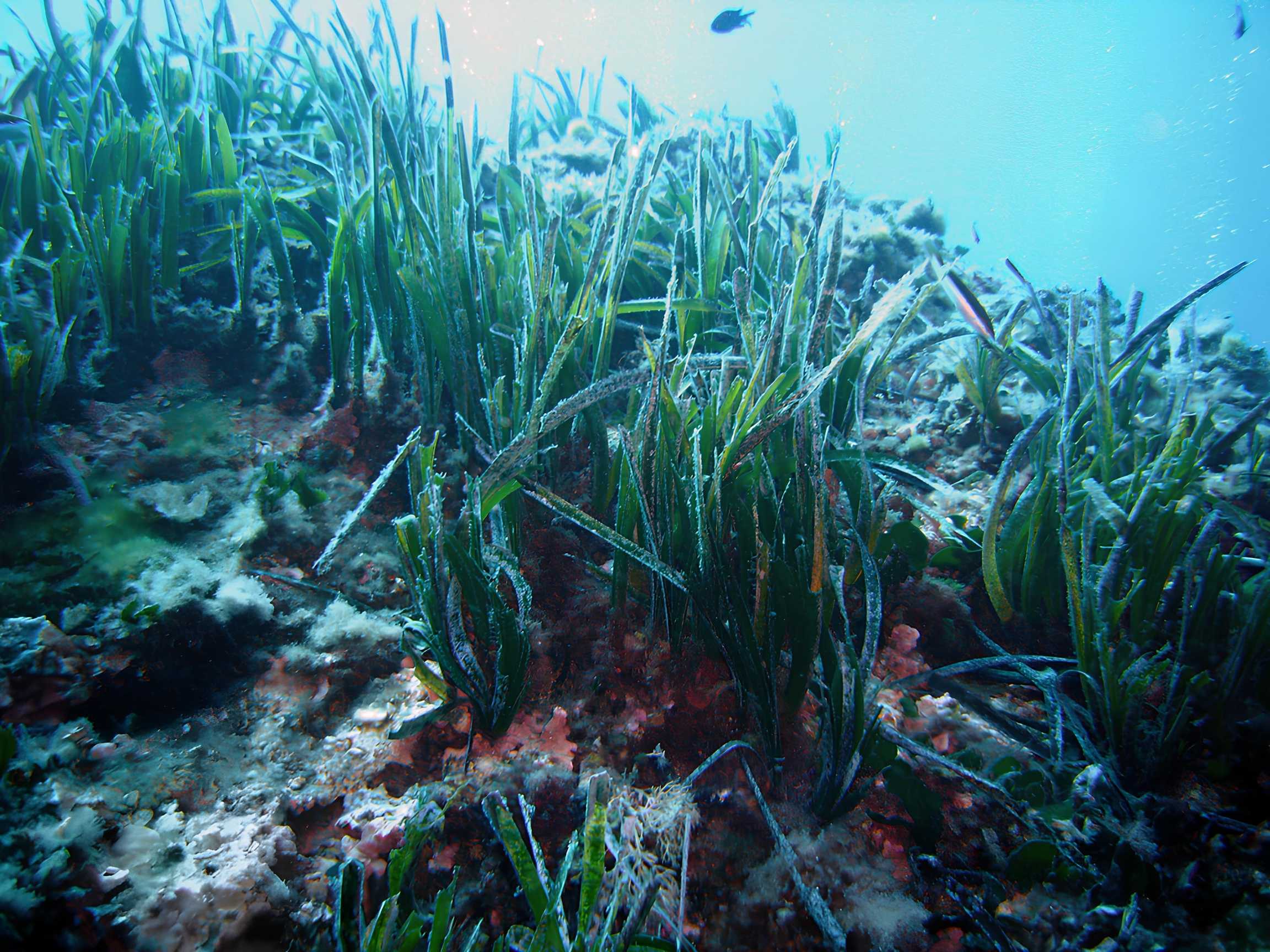Notwithstanding certain surprising animals (such as rotifers, which have the ability to resurrect after desiccation, oxygen deprivation, or freezing), scientists have discovered colonies of Scolymastra joubini sponges estimated to be around 23,000 years old.
While this is incredibly impressive, there are living beings on Earth with a lifespan that is more than four times greater. For instance, the clonal colony of quaking aspen trees (Populus tremuloides) in Utah, USA — considered a single living organism populated by around 40,000 individuals — is estimated to be 80,000 years old!
An 80,000 to 200,000-Year-Old Seagrass
But there are even older organisms: seagrass (Posidonia oceanica). It is an underwater flowering plant found in the Mediterranean Sea, where it is endemic. These colonies form vast meadows covering more than 3,500 km of seabed.
The largest one stretches over 15 kilometers near the coast of Formentera Island (Balearic Islands). A study conducted in 2012 estimated the age of this superorganism, which reproduces through cloning, to be between 80,000 and 200,000 years. Unfortunately, P. oceanica is threatened by climate change. The waters of the Mediterranean Sea, which are warming three times faster than the average, cause the disappearance of 5% of the colonies every year.
References
- Arnaud-Haond, S., Duarte, C. M., Diaz-Almela, E., Marbà, N., Sintes, T., & Serrão, E. A. (2012). Implications of Extreme Life Span in Clonal Organisms: Millenary Clones in Meadows of the Threatened Seagrass Posidonia oceanica. PLoS ONE, 7(2), e30454. https://doi.org/10.1371/journal.pone.0030454
- Featured Image: Wikimedia.
